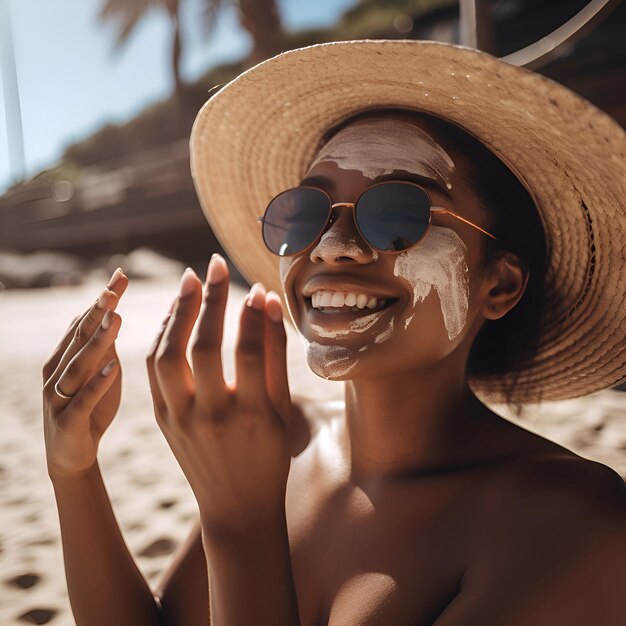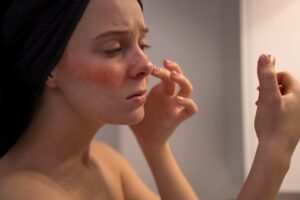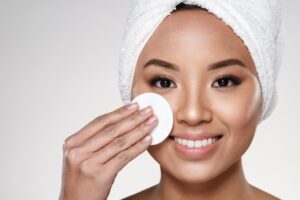Have you ever wondered what that mysterious number on your sunscreen package means? If you have no idea, don’t worry! We’re here to talk about SPF. So buckle up, and let’s dive in.
The acronym SPF stands for Sun Protection Factor, and it’s your skin’s best bet when it comes to battling pesky UV rays that try to damage your skin.
Think of SPF as a shield that deflects a certain percentage of UV rays that can damage your skin and lead to sunburn, premature aging, and even worse, skin cancer.
Unlike what most people think, SPF isn’t like an invisibility cloak for your skin, and so it doesn’t mean you can stay under the sun for hours on end without consequences (why should you even do that, by the way).
So, rather than shielding you completely from the sun, SPFs actually reduce the amount of rays that your skin receives. And the number on the SPF indicates to what extent your sunscreen can do this.
Let me break it down a bit

SPF 15 – This type of SPF blocks about 93% of UVB rays, and it is a good pick for people with naturally darker skin or people who spend limited time outdoors.
SPF 30 – Blocks 97% of UVB rays, offering broader protection for most skin types and moderate sun exposure. It is also the sweet spot recommended by dermatologists.
SPF 50 and above – these types of SPFs block 98% or more of UVB rays. However, even though this range of sunscreens actually offer more protection, the difference between this type of SPFs (especially SPF 50), and SPF 30 is quite minimal.
Now, I must add that while the number on your SPF tells you how effective the shield is, a higher number does not always mean it’s better.
Also, UVA and UVB rays are quite harmful. So when choosing an SPF, look out for those ones that have “broad spectrum” on the label – this means the sunscreen protects against both UVA and UVB rays.
Do you need to Use Sunscreen as Part of your Makeup Process
First, sunscreen is non-negotiable (except you have personal reasons for not using it).
The truth is, no amount of highlighter can hide sun damage. And even though some foundations, BB creams, and even lipsticks claim to offer sun protection, they are not just enough. And I’ll tell you why.
First, the amount of SPF you actually get from makeup is often questionable. How much do you apply? Does it cover all your exposed areas evenly? It’s hard to tell. So, this leaves your skin vulnerable to sun damage.

Also, most makeup with SPF only offers SPF 15 or 30 (in minimal amounts), which isn’t enough for daily protection, especially if you’re spending a lot of time outdoors.
And lastly, let’s be real: makeup does not always last. It sweats off, rubs off, and generally fades throughout the day. That means your precious SPF protection is fading, too, leaving your skin exposed.
So, should sunscreen be a part of your makeup process? Definitely, yes.
Including sunscreen in your makeup routine is advisable and it’s totally doable! In fact, it’s the best way to ensure your skin gets the protection it deserves.
So here’s how to do it
Sunscreen First
Apply a generous layer of sunscreen (SPF 30 or higher) to your clean, moisturized face and neck at least 15 minutes before makeup, then let it dry completely to avoid pilling or makeup meltdown.
Choose your foundation wisely
Look out for a foundation that has SPF. And even when you get one, don’t rely solely on it. Think of the foundation as a bonus, not your main source of protection. Also, choose a foundation you love for its coverage and finish, regardless of the SPF.
By making sunscreen the first step in your makeup routine, you’re not altering your look but enhancing it! You’re giving your skin the best possible chance to stay healthy, youthful, and radiant, which is the ultimate beauty goal, right?
So the next time you’re out to get some makeup products, don’t forget to grab sunscreen as well.
That said, let’s talk about the factors you need to consider when choosing sunscreen.
How to Find the Best SPF for You
SPF is a critical part of skincare, and because of this, choosing the right one is very crucial. However, with shelves overflowing with options, finding the right one can be quite tedious. But I’m here to help.
The first thing you want to consider is your skin type. If you have dry skin. Opt for creamy formulas with hydrating ingredients. For oily skin, you need something lightweight and oil-free. On the other hand if you have sensitive skin, then mineral sunscreens with zinc oxide or titanium dioxide may be gentler for your skin.
The second factor is lifestyle. The type of Sunscreen you need may vary depending on where and how you spend your time.
If you’re a beach bum, then waterproof sunscreen is a must! A gym rat? Sweatproof formulas will serve you best. And if you’re a Makeup lover, then you should try tinted sunscreens
One other factor that you may want to consider is sun exposure. If you’re planning a sun-drenched vacation, have SPF 50+ handy. But if you’ll be spending most of your day indoors, then SPF 30 is your friend. But remember, reapplication is key, no matter the SPF!
One more thing…
Becoming a sunscreen pro might take a while, but you’ll get better with time. If you’re a first-timer, be sure to check whether the product is non-comedogenic, especially if you have acne-prone skin.
Also, don’t forget your lips and delicate areas like ears and tops of feet – every part of your body deserves to be pampered.
So, if you’re in for healthy and glowing skin, go get yourself sunscreen. Your skin will thank you. And your older self will, too.











